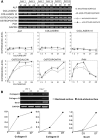Concise review: the periosteum: tapping into a reservoir of clinically useful progenitor cells
- PMID: 23197852
- PMCID: PMC3659712
- DOI: 10.5966/sctm.2011-0056
Concise review: the periosteum: tapping into a reservoir of clinically useful progenitor cells
Abstract
Elucidation of the periosteum and its regenerative potential has become a hot topic in orthopedics. Yet few review articles address the unique features of periosteum-derived cells, particularly in light of translational therapies and engineering solutions inspired by the periosteum's remarkable regenerative capacity. This review strives to define periosteum-derived cells in light of cumulative research in the field; in addition, it addresses clinical translation of current insights, hurdles to advancement, and open questions in the field. First, we examine the periosteal niche and its inhabitant cells and the key characteristics of these cells in the context of mesenchymal stem cells and their relevance for clinical translation. We compare periosteum-derived cells with those derived from the marrow niche in in vivo studies, addressing commonalities as well as features unique to periosteum cells that make them potentially ideal candidates for clinical application. Thereafter, we review the differentiation and tissue-building properties of periosteum cells in vitro, evaluating their efficacy in comparison with marrow-derived cells. Finally, we address a new concept of banking periosteum and periosteum-derived cells as a novel alternative to currently available autogenic umbilical blood and perinatal tissue sources of stem cells for today's population of aging adults who were "born too early" to bank their own perinatal tissues. Elucidating similarities and differences inherent to multipotent cells from distinct tissue niches and their differentiation and tissue regeneration capacities will facilitate the use of such cells and their translation to regenerative medicine.
Figures







References
-
- Duhamel HL. Sur le Developpement et la Crue des os des animaux. Mem Acad Roy Des Sci. 1742;55:354–357.
-
- Ollier L. Recherches experimentales sur les greffes osseuses. J Physiol Homme Animaux. 1860;3:88.
-
- Ueno T, Kagawa T, Mizukawa N, et al. Cellular origin of endochondral ossification from grafted periosteum. Anat Rec. 2001;264:348–357. - PubMed
Publication types
MeSH terms
Substances
Grants and funding
LinkOut - more resources
Full Text Sources
Other Literature Sources
Medical

